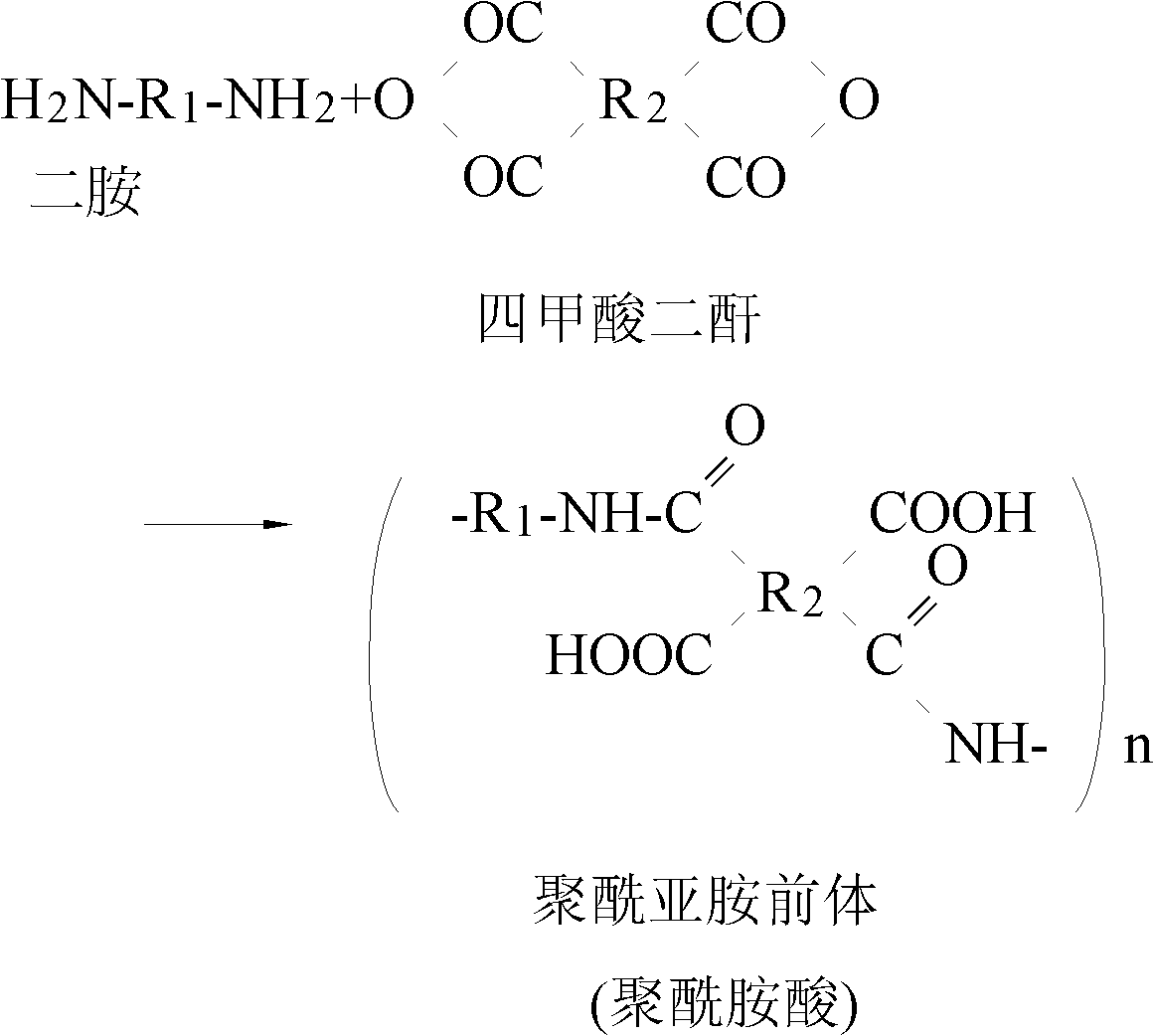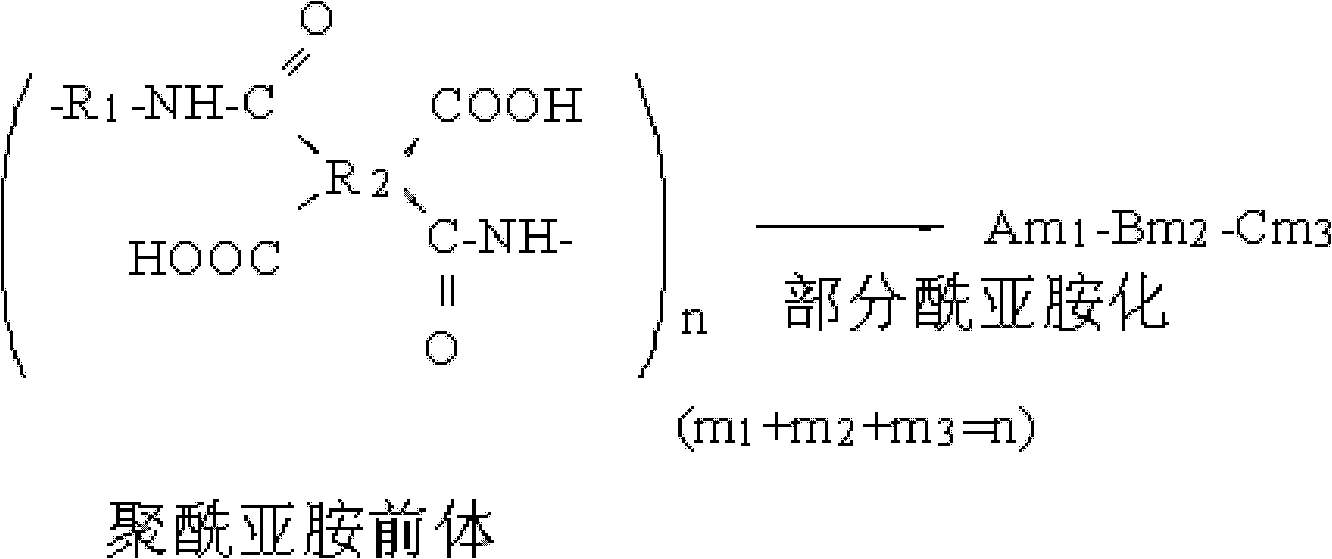Transparent electrode
A transparent electrode and electrode layer technology, applied in the direction of gas discharge electrodes, circuits, electric light sources, etc., can solve the problems of high processing cost, easy to break, and unsuitable materials for transparent electrodes, etc., and achieve high conductivity and excellent heat resistance Effect
- Summary
- Abstract
- Description
- Claims
- Application Information
AI Technical Summary
Problems solved by technology
Method used
Image
Examples
Embodiment approach
[0048] Hereinafter, the present invention will be described in more detail with reference to the following examples. However, the scope of the present invention is not limited thereto.
[0049]
preparation example 1
[0051] The polyimide precursor solution (solid content: 20%) was obtained by dissolving 2,2′-bis(trifluoromethyl)-4,4′-diaminobiphenyl ( 2,2'-TFDB), biphenyltetracarboxylic dianhydride (BPDA) and 2,2-bis(3,4-dicarboxyphenyl)hexafluoropropane dianhydride (6-FDA) by polycondensation. This reaction process is represented by Reaction Formula 1 below.
[0052] Reaction 1
[0053]
[0054] Subsequently, 2 to 4 equivalents of acetic anhydride (Samjeon Chemical Co., Ltd.) and pyridine (Samjeon Chemical Co., Ltd.) as a curing agent were respectively added to 300 g of the polyimide precursor solution to form a polyamic acid solution. Then, the polyamic acid solution is heated at a heating rate of 1-10°C / min for 2-10 hours to a temperature of 20-180°C to partially imidize (partially solidify) the polyamic acid solution, thereby preparing the polyamic acid solution containing part of imide A solution of an aminated (partially cured) intermediate.
[0055] Reaction Formula 2 below re...
preparation example 2
[0073] 34.1904 grams of N,N-dimethylacetamide (DMAc) was filled into a 100 mL three-necked round bottom flask as a reactor equipped with a stirrer, nitrogen sparger, dropping funnel, temperature controller and cooling reactor while passing nitrogen through the flask, then the reactor was cooled to 0°C, then 4.1051 g (0.01 mol) of 6-HMDA was dissolved in N,N-dimethylacetamide (DMAc) to form a first solution, and then the second A solution was maintained at 0°C. Subsequently, 4.4425 g (0.01 mol) of 6-FDA was added to the first solution to form a second solution, and then the second solution was stirred for 1 hour to completely dissolve 6-FDA in the second solution. In this case, the concentration of solid matter in the second solution was 20% by weight. Thereafter, the second solution was stirred at room temperature for 8 hours to obtain a polyamic acid solution having a viscosity of 2400 cps at 23°C.
[0074] After the reaction was completed, the obtained polyamic acid soluti...
PUM
| Property | Measurement | Unit |
|---|---|---|
| yellowness index | aaaaa | aaaaa |
| thickness | aaaaa | aaaaa |
| thickness | aaaaa | aaaaa |
Abstract
Description
Claims
Application Information
 Login to View More
Login to View More - R&D
- Intellectual Property
- Life Sciences
- Materials
- Tech Scout
- Unparalleled Data Quality
- Higher Quality Content
- 60% Fewer Hallucinations
Browse by: Latest US Patents, China's latest patents, Technical Efficacy Thesaurus, Application Domain, Technology Topic, Popular Technical Reports.
© 2025 PatSnap. All rights reserved.Legal|Privacy policy|Modern Slavery Act Transparency Statement|Sitemap|About US| Contact US: help@patsnap.com



